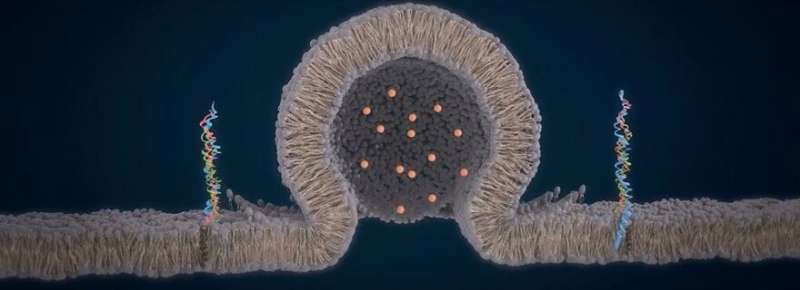This is how a channel is formed between two organelles

The channel through which two cell components exchange material appears to form at the edge of their contact surface, and not in the middle. This was discovered by the Leiden physical chemists Jelger Risselada and Edgar Blokhuis together with researchers from the University of Lausanne in Switzerland. They published their findings in The Journal of Physical Chemistry Letters on 20 February.
The beginning: a striking observation
It all starts with a remarkable observation in Lausanne. Swiss researchers examine so-called vacuoles of yeast cells under the microscope to look for channels between them. These vacuoles are not very interesting in themselves, but they resemble human cell parts, namely the organelles. Because of this resemblance, they can provide interesting insights. Normally, the channels between vacuoles are too small to be seen under a normal microscope. But the researchers come up with a handy trick for this: with the help of osmotic pressure they manage to enlarge the vacuoles and their channels in such a way that the channels become visible.
And what they then see surprises them. The Swiss researchers are curious about the connecting channel between the two yeast "organelles." For a cell to function properly, it is essential that organelles can exchange material with each other, for example, to discharge waste products. This transfer takes place via a channel. However, it was unknown where such a channel is located in the contact surface between two organelles. But then the researchers see something interesting through their microscope: the connecting channel appears to be at the edge, as can be seen on the right. Last author Jelger Risselada: "Then we wondered, is that always the case? Or only if you magnify these channels unnaturally, as the Swiss did?"
A Nobel Prize-worthy subject
Risselada decides to look for the answers and engages colleague Edgar Blokhuis. "Edgar is a specialist in the tricky mathematics needed for the models I wanted to develop," says Risselada.
Research into channels, also called fusion pores, is hot. In 2013, for example, three American scientists received the Nobel Prize for their discovery of the so-called SNARE proteins. "These proteins bring two organelles together and also direct the formation of the channel," says Risselada. "In textbooks, channels are always reproduced symmetrically, in the case of neurons (see animation) but also in the case of the much larger organelles. What we have now discovered shows something completely different for organelles."
More information: Edgar M. Blokhuis et al. Fusion Pores Live on the Edge, The Journal of Physical Chemistry Letters (2020). DOI: 10.1021/acs.jpclett.9b03563
Journal information: Journal of Physical Chemistry Letters
Provided by Leiden University




















